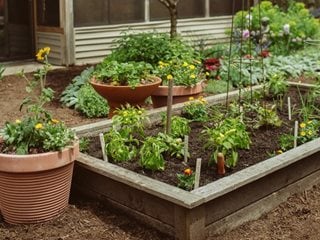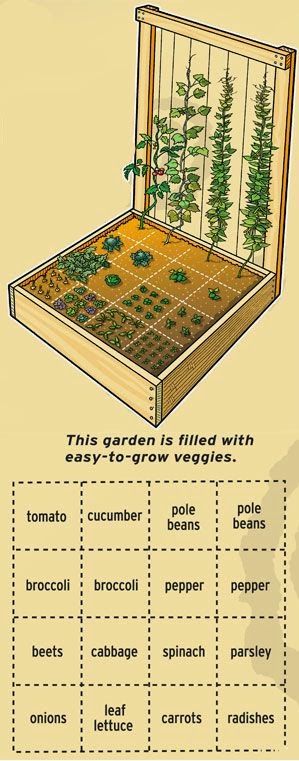My father called them 'old maids,' just like his mother before him, and as a child I recall puzzling over what zinnias had in common with my favorite teachers at school. He planted great swaths of zinnias in any available space, and it often became my job to clip off the spent blossoms and gather the best ones for bouquets.

Veggie Garden Planner. This is one of the best gardening apps. First of all, it will provide you with all the necessary information concerning plants and vegetables. You can forget about Wikipedia and other information sites. Everything you might need is in Veggie Garden Planner! Every time you need to find or check information, feel free to do it. Apps to Help You Plan Your Garden. Our Garden Planner helps you design the best layout for your vegetable garden. Get Worms to Work for You in Your Garden. It's easy to forget the worms in our garden - after all, out of sight, out of mind, right? But worms are quite literally the foundation to a healthy, thriving garden. Vegetable Gardening. Kitchen Garden Planner Pest & Disease Directory. Get in on the best deals, new products and gardening tips. . Order remainder of garden seeds for the 2021 garden. Direct seeded crops can be ordered later, but early provides best selection. Seed the earliest of warm-season transplants. An early May transplant date will require a February or early March seeding. If conditions allow, you may prepare soil for early seeded cool-season crops.
And so I came into my gardening life with a natural love for zinnias, which are perhaps the only annual flower I plant in my vegetable garden year after year. Growing zinnias on the same schedule as tomatoes, I plant zinnias for myself, the bees, and for the monarch butterflies that migrate south in the fall. Indeed, the parent species of modern zinnias were found in southwestern Mexico, only a few hundred miles from the Monarch Butterfly Biosphere Reserve, where millions of monarch butterflies spend the winter. When the monarchs pass through my garden in late September, they recognize the zinnias instantly, and always stop for a few sips of nectar.
Note that Europe's most famous migratory butterfly, the painted lady, can be lured into gardens with zinnias and many other nectar-bearing flowers during the summer, but southbound migrants fly so high (at about 500 meters) that refreshment stops are impractical.
Great Garden Zinnias

Over the last thirty years, dozens of new zinnia varieties have been introduced, so that one can choose between compact, powdery mildew-resistant 'Profusion' zinnias, which form low cushions of color, mid-size varieties like 'Cut and Come Again', which were bred in France in the 1880's, or tall, large flowered varieties like 'State Fair' and 'Benary Giant', which make great cut flowers. Many bug and butterfly watchers have observed that low-growing zinnias are less attractive than taller varieties, and single-flowered strains are preferred over doubles. Two variety names - Whirligig and Zowie – are often named as butterfly favorites by gardeners; a study from the University of Kentucky found that the heirloom 'Lilliput' variety attracted twice as many butterflies as 'Oklahoma' and 'State Fair'.
Consider your interior décor when choosing zinnias, because you can make endless bouquets with the newly opened blossoms. For example, soft yellow is easy to mix and match in bouquets, but orange can present a challenge. Growing zinnias in mixed colors gives you plenty of flexibility, and you can save seeds from varieties you especially like.

Growing Garden Zinnias

Semi-tropical zinnias need warm conditions to grow well, so I wait until late spring to start seeds indoors. Seed germination is usually fast and sure, but then the seedlings need plenty of light to keep them happy. I grow my zinnia seedlings alongside tomato and pepper seedlings, which have similar preferences for warm temperatures and intense light.
Zinnias need fertile soil in full sun, and varieties that grow more than 24 inches (60 cm) tall benefit from staking. Unstaked plants that are blown over by storms will continue to produce flowers, but the stems will be short and curved, and more difficult to use in arrangements.
Most zinnias are susceptible to powdery mildew, which is most severe on tired old plants. To make sure I have plants blooming when the monarch butterflies come in fall, I start more zinnia seeds in early summer.

Veggie Garden Planner. This is one of the best gardening apps. First of all, it will provide you with all the necessary information concerning plants and vegetables. You can forget about Wikipedia and other information sites. Everything you might need is in Veggie Garden Planner! Every time you need to find or check information, feel free to do it. Apps to Help You Plan Your Garden. Our Garden Planner helps you design the best layout for your vegetable garden. Get Worms to Work for You in Your Garden. It's easy to forget the worms in our garden - after all, out of sight, out of mind, right? But worms are quite literally the foundation to a healthy, thriving garden. Vegetable Gardening. Kitchen Garden Planner Pest & Disease Directory. Get in on the best deals, new products and gardening tips. . Order remainder of garden seeds for the 2021 garden. Direct seeded crops can be ordered later, but early provides best selection. Seed the earliest of warm-season transplants. An early May transplant date will require a February or early March seeding. If conditions allow, you may prepare soil for early seeded cool-season crops.
And so I came into my gardening life with a natural love for zinnias, which are perhaps the only annual flower I plant in my vegetable garden year after year. Growing zinnias on the same schedule as tomatoes, I plant zinnias for myself, the bees, and for the monarch butterflies that migrate south in the fall. Indeed, the parent species of modern zinnias were found in southwestern Mexico, only a few hundred miles from the Monarch Butterfly Biosphere Reserve, where millions of monarch butterflies spend the winter. When the monarchs pass through my garden in late September, they recognize the zinnias instantly, and always stop for a few sips of nectar.
Note that Europe's most famous migratory butterfly, the painted lady, can be lured into gardens with zinnias and many other nectar-bearing flowers during the summer, but southbound migrants fly so high (at about 500 meters) that refreshment stops are impractical.
Great Garden Zinnias
Over the last thirty years, dozens of new zinnia varieties have been introduced, so that one can choose between compact, powdery mildew-resistant 'Profusion' zinnias, which form low cushions of color, mid-size varieties like 'Cut and Come Again', which were bred in France in the 1880's, or tall, large flowered varieties like 'State Fair' and 'Benary Giant', which make great cut flowers. Many bug and butterfly watchers have observed that low-growing zinnias are less attractive than taller varieties, and single-flowered strains are preferred over doubles. Two variety names - Whirligig and Zowie – are often named as butterfly favorites by gardeners; a study from the University of Kentucky found that the heirloom 'Lilliput' variety attracted twice as many butterflies as 'Oklahoma' and 'State Fair'.
Consider your interior décor when choosing zinnias, because you can make endless bouquets with the newly opened blossoms. For example, soft yellow is easy to mix and match in bouquets, but orange can present a challenge. Growing zinnias in mixed colors gives you plenty of flexibility, and you can save seeds from varieties you especially like.
Growing Garden Zinnias
Semi-tropical zinnias need warm conditions to grow well, so I wait until late spring to start seeds indoors. Seed germination is usually fast and sure, but then the seedlings need plenty of light to keep them happy. I grow my zinnia seedlings alongside tomato and pepper seedlings, which have similar preferences for warm temperatures and intense light.
Zinnias need fertile soil in full sun, and varieties that grow more than 24 inches (60 cm) tall benefit from staking. Unstaked plants that are blown over by storms will continue to produce flowers, but the stems will be short and curved, and more difficult to use in arrangements.
Most zinnias are susceptible to powdery mildew, which is most severe on tired old plants. To make sure I have plants blooming when the monarch butterflies come in fall, I start more zinnia seeds in early summer.
To save zinnia seeds for replanting, simply collect a few blossoms that are at least halfway brown, and let them dry in a paper bag until they shatter. You will find dark, pointed seeds attached to the bases of outer petals, with more coming along in the center. When allowed to dry until hard and almost crisp and stored under good conditions, zinnia seeds will stay viable for five years or more.
Finally, petals snipped from organically grown zinnias are edible. They have little flavor, but make great color accents whether you use them to dress up a serving tray or add interest to a pitcher of herb tea – a trick my country grandmother might have tried with some of her old maids, if only she had known it was possible.
Best Vegetable Garden Planning App
By Barbara Pleasant
